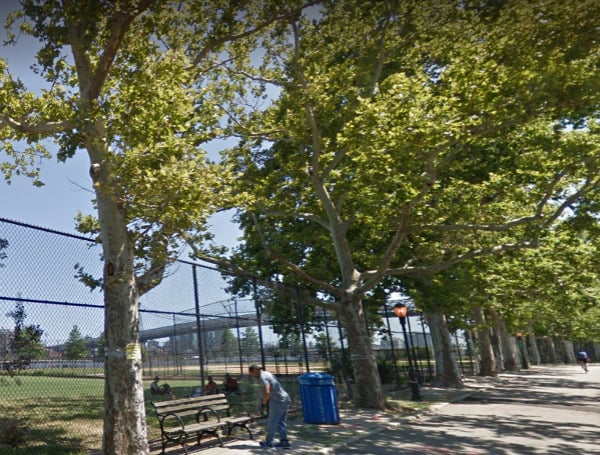The fearmongering of COVID-19 has left some people irreparably scarred psychologically.
But the virus is not alone in causing some of the warped thinking that’s become so prevalent. Climate change is helping drive it as well.
Some evidence can be found in New York City.
Since early December city crews have cut down more than 800 trees in the 46-acre John V. Lindsay East River Park on the Lower East Side of Manhattan, which is the largest piece of greenspace in that part of the city, according to Environmental & Energy, or E&E, News.
Eventually, a total of 1,000 trees will be axed and removed from the park.
E&E News reported that the deforestation work is part of a $1.45 billion flood protection plan hatched after much of the Big Apple was lashed by Superstorm Sandy in 2012.
Yet what makes the project seem surreal is that the city is implementing a fix to a once-in-a-lifetime event – Hurricane Sandy – and not “following the science,” as a popular mantra holds today, in the process.
That’s because a study published earlier this year projected that sea rise around Manhattan will be just a few inches over the next century – and is actually occurring because the ground is sinking.
As E&E News put it, New Yorkers are getting “a close-up glimpse of the trade-offs inherent in the fight against climate change.”
“City officials say the tree removal is just a necessary first step to creating a bigger and better park. More importantly, they say, the remade East River Park will be better able to withstand storm surge even as the waters surrounding lower Manhattan rise in the coming years.”
So far the city has removed 419 oaks, 284 London planes, 89 honeylocusts and 81 cherry trees. Some trees are native to the park since its founding in 1939.
But after another 200 or so trees are gone, the city also will demolish a running track, ballfields, lawns, picnic areas, an amphitheater and a composting center.
According to E&E News, city officials said the park will be raised 8 feet to 10 feet to help protect 110,000 New York residents, including 28,000 people who live in low-income housing on the East Side.
And according to city staff environmentalists’ math, to improve the sustainability and diversity of the site, crews will haul out 70 species of trees, and replace them with 52 species, albeit ones that reportedly will better resist salt water.
Critics, who have nicknamed outgoing left-wing Mayor Bill de Blasio “Tree-Kill Bill,” and accused him of “ecocide,” are not buying the explanation.
Amy Berkov, an ecologist at City College of New York and a resident of the East Village for more than 40 years, told E&E News that the city’s own data showed that 92 percent of the trees were slated for removal because of “design reasons,” and not because of their condition.
Karen Kapnick, a protester at the project, told E&E News, “What’s the point of paying a parks department that cuts down trees?”
“Little saplings are not going to help with climate change,” she said of the rationale for planting new trees. “That’s what the whole point of this is supposed to be. I am so disgusted by this plan.”
In March, researchers published a study of tidal gauges around New York City, including in lower Manhattan, in the Journal of Ocean Engineering and Science.
The alarmist research says those levels will increase by at least a foot within 30 years and up to 6 feet by century’s end, the study notes.
But based on GPS monitoring of those sites, the study projected that sea-level rise around lower Manhattan would reach a little more than 1 inch by 2050, and less than 3 inches by 2100.
The study is based in part on areas at the southern tip of Manhattan, which is closer to the ocean than the park in question. Tidal gauges there have recorded data on the ebb and flow of the water since 1856.
“Although the climate models predict that rising CO2 levels should cause an accelerated sea-level rise, the sea level measurements show that, thus far, there has been no detectable acceleration in the rate of sea-level rise,” the study says.
“It has been shown already that worldwide the relative sea levels are rising and falling depending on the location but on the average rise only slowly and not accelerating.”
“Ocean and coastal management should be based on proven sea level data and not on speculations by unvalidated models,” the conclusion adds.
Check out Tampafp.com for Politics, Tampa Area Local News, Sports, and National Headlines. Support journalism by clicking here to our GoFundMe or sign up for our free newsletter by clicking here.
Android Users, Click Here To Download The Free Press App And Never Miss A Story. It’s Free And Coming To Apple Users Soon
